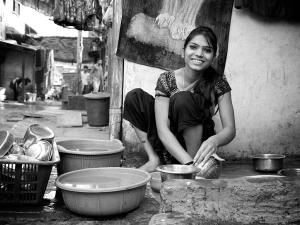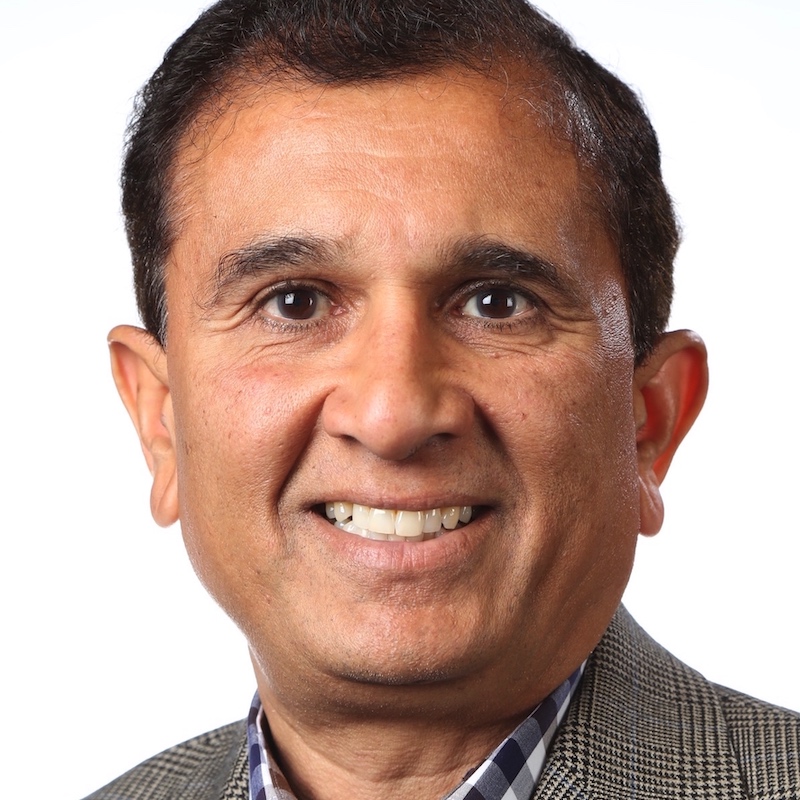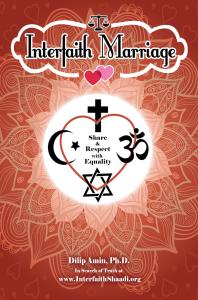JULY 9, 2022 BY DR. DILIP AMIN0 COMMENTS
Discrimination expresses itself in different forms. The aim of this article is to highlight the paradoxical discrimination against women of one’s own type.
Interfaith marriages have many issues, however intra- or within-faith-marriages are not without their own challenges. In this article, some of the main issues related to within-faith marriages of people from Eastern Hindu and Muslim cultures are highlighted using hypothetical names, Meera representing as a Hindu woman, read it as Majida for Muslim, and Margaret for Western Christian.

Just like interfaith marriages, the gravity of problems one may face in within-faith marriages are also significant. In the Eastern culture, some of their root causes may stem from unusually high expectations, ingrained social customs, discrimination against women in some cases, and sometimes the paradoxical human nature to discriminate against one’s own type.
For example, as a would-be bride/wife/daughter-in-law in a Hindu family, Meera may be expected from the very beginning to help her mother-in-law-to-be in the household work. If her mother-in-law-to-be wants to prepare samosas (Indian dumplings), Meera would be expected to be in the kitchen with her and assist her towards that end. Yet, if the same Indian lady happened to be a mother-in-law-to-be to Margaret, she would derive much joy and satisfaction simply from the fact that Margaret relished her preparations, thus impressing a stamp of approval on her culinary skills.
Any gift from Meera’s parents may not be sufficient to please the Hindu groom’s parents, while the same parents may gladly buy many stylized Indian dresses for Margaret and her entire family at their own expense.
In many cultures, women have traditionally been housewives, expected to be responsible for the running of the household and for maintaining social relationships. However, in this day and age, the new generation of educated women from South Asia are expected to take on additional responsibilities in the form of having a lucrative career and contributing towards the financial well-being of the family. Unfortunately, while the new expectations are there, some men and their families have not fully adapted to the reality of this social change. Meera may have a job outside the home, and yet when she returns home after work, she is expected to carry out all the household chores, including taking care of children and cooking. Her husband may decide to help as and how he feels appropriate or may just relax in front of the television. As the king of the castle, the choice would be entirely his. Interestingly, if this very man were married to Margaret, he would gladly help out with household chores including cleaning dishes and bathrooms.
The older generation of people, that we are focusing on in this article, are not used to having men work in the kitchen or folding the laundry. So, when parents pay a visit to their son, who is settled with his wife in the West, normally it is like a paid vacation for them during which they wish to spend some time with the family, do sightseeing, and relax. When they see their son helping Meera out in and around the house, they feel intimidated, immediately wanting to intervene and relieve their son of his designated responsibilities on the home front, but they might not reach out to Meera with the same attitude. What these parents do not realize is that had it been Margaret, they wouldn’t have felt quite so welcomed into their own son’s house, and would have been less inclined to plan an extended visit.

The author personally knows of a case where a Hindu-American girl married a Pakistani after fake-religious conversion to Islam. The (former) Hindu is treated like a queen by Muslim in-laws whenever she visits Pakistan. In contrast, her Muslim sister-in-law from Pakistan gets a rude treatment from the same Muslim in-laws despite her shouldering the responsibility of a capable home-maker.
These Pakistani parents do not realize that the (former) Hindu daughter-in-law, in her mind, underwent a fake-conversion ceremony (shahadah oath) necessary for the Islamic nikaah wedding. In fact, to date they remain ignorant of the fact that the couple also had a Hindu wedding ceremony (prohibited in Islam) and that their Hindu daughter-in-law is performing Ganesh puja every day in America. Why did these Pakistani parents give dignity to an outsider but not to their own type?
When there is a within-faith marriage, parents from both the parties are keen that the young people carry on with the age-old traditions being passed on from generation to generation. In another example, Bangladeshi Raquib’s Muslim-Muslim engagement is in trouble because of the expectations thrust upon him to purchase certain gifts of conspicuous value for his wife’s parents in Pakistan. While the dowry system is still somewhat prevalent in the East, the parents would not even dream of a dowry if the engagement were to take place with Margaret.
It is normal for such parents to micro-analyze a potential fiancé(e) when it is a within-faith marriage. For example, a Patel-Hindu contemplating marriage to another Patel-Hindu must know if the selected Patel is Kadva or Leuva Patel and whether they are Swaminarayan, Shaivites or Vaishnav. However, the same parents are completely content in not knowing anything about Margaret beyond the label of German French.
Moreover, prior to the engagement, it is customary for the within-faith fiancé(e) to undergo strict scrutiny and background checks. And, let’s say if there happened to be some un-authenticated information about Meera flirting with boys in her college days, it could become a big moral issue, enough to hinder any further talk of marriage.
It is a practice in some Muslim communities to display a bloody bed sheet after the first wedding night as a proof, both of the consummation of the marriage, and of the bride’s virginity. A stainless sheet would translate into a pre-stained new bride, which could amply justify a divorce on the very first day. Would they follow the same practice if the wife happened to be Margaret?
Many young people from South Asia, when pursuing further studies in universities abroad, prefer dating those from a different faith. One of the main reasons being that given their marriageable age factor, within-faith dating could escalate the expectations of marriage, which they have no interest in committing themselves to, and understandably so. Muslim and Hindu girls may not consider sleeping with a boyfriend of their own faith due to its social stigma within their religious community; and yet, they are bound to be more at ease with a boyfriend from another faith and culture. Likewise, a male entity from East may indulge into a non-committal relationship with Margaret, which may later blossom into an actual romance and eventuate in tying the knot.
Due to the issues mentioned above, should these young people consider interfaith marriage over within-faith marriage? That is certainly not the message here.
Interfaith marriages have their own challenges. It remains an undisputed fact that the divorce rates in interfaith marriages are higher compared to within-faith marriages. Most interfaith issues surface after children reach the ages of 5-13, coinciding with the time the parents need to make the decision regarding their children’s “formal” religion.
Cultural issues could also add to complexities at a later stage for people belonging to the “eastern” background. As a man reaches the late middle age (i.e., 50+ years) he might want to go back to his own roots, finding that there is little to bond with a menopausal-Margaret, and few common interests left to give meaning to their togetherness.
Compared to interfaith marriages, the gravity of issues is higher in the early years for within-faith married couples. If Meera wishes to be successful in a within-faith marriage, she needs to learn to deal firmly with her in-laws on an equal footing. From the very beginning, Meera must learn to find a balance between being a wife/spouse/partner and a daughter-in-law. And if her husband happened to be ignorant of the contemporary rules of marital life, she must be apt to update him as well as her in-laws.
The sooner Meera manages to deal with these issues, the more rewarding her married life will become, and can only improve over the years. In contrast, many interfaith marriage issues may get overlooked when one is riding the wave of youthful love. However it may resurface later into the marriage, when the initial thrill is all but disappeared, and the matter regarding their children’s religion raises its ugly head. Unfortunately, sometimes, these religious conflicts continue until it is time to perform the final rites.
The time has come for the parents from South Asia to adapt to the new realities of life. Typically, the Hindu or Muslim parents will always have something to complain about with Meera’s or Majida’s choices, whether she is in an interfaith or within-faith marriage. Those parents should be reminded that the situation could potentially be worse if Meera or Majidadecided to get into a relationship with Margaret!
Parents should know that they don’t “own” their child; rather the child has come into this world through them. If parents start respecting their children as unique individuals, the way they respect their friends and boss at work, the parent-child relationship will blossom, and everyone will benefit.
The grass is always greener on the other side. Instead of getting stuck on issues in your planned married life, one needs to learn to deal with issues at hand. For example, if a person raised in the Dharmic faith fell in love with a religious person from an Abrahamic faith, the most critical questions to address upfront are the decisions whether to convert to the spouse’s religion and what the formal religion of any future children would be.
Dharmic or Muslim couples considering a within-faith marriage would be advised to evaluate real compatibility with each other and potential negative influences of in-laws.
It is human nature to discriminate against others. However, if we learn to love and respect all, it will be a win-win situation for all.
Life is never like a rose garden; and even if it is, roses always have thorns. Learn to live and let live.
@@@
Under the theme “Equality for Happiness,” the author has written four articles here (10 Keys to a Successful Marriage, Hindu-Muslim Marriage and Application of Pluralism, Circumcision and Marriage Laws) and also have written a book addressing equality in Dharmic-Abrahamic marriages. Here, the author is covering potential discrimination of women in within-faith marriages. Whatever type of marriage, one needs to learn to deal with it. If you have a personal experience, please share it below. Unless you speak out, how can we work to address it? Thank you.



- FAMILY RSS
- TAGGED WITH:
- BUDDHISM
- CATHOLIC
- …MORE

ABOUT DR. DILIP AMINDr. Dilip Amin is a Director of the Peninsula Multifaith Coalition of the San Francisco Bay area and a certified speaker at Islamic Networks Group. He is a Dharma Ambassador and on the Advisory Committee at the Hindu American Foundation. He is a jail chaplain. Dr. Amin has co-authored the book Hindu Vivaha Samskara. He founded the web forum InterfaithShaadi.org and guided 1200 youths and summarized his experiences in the book–Interfaith Marriage: Share & Respect with Equality. He is also the founder of HinduSpeakers.org. You can read more about the author here.


